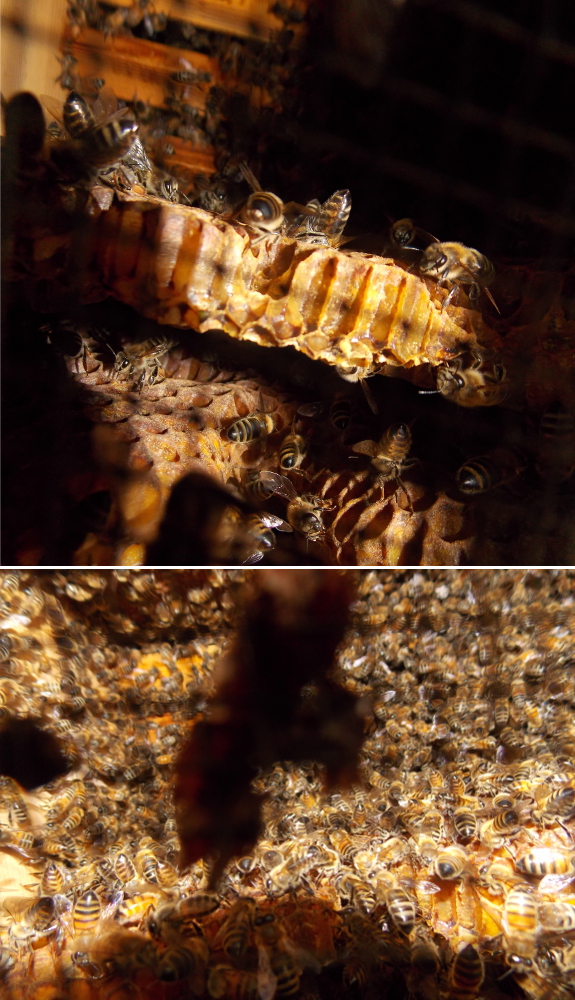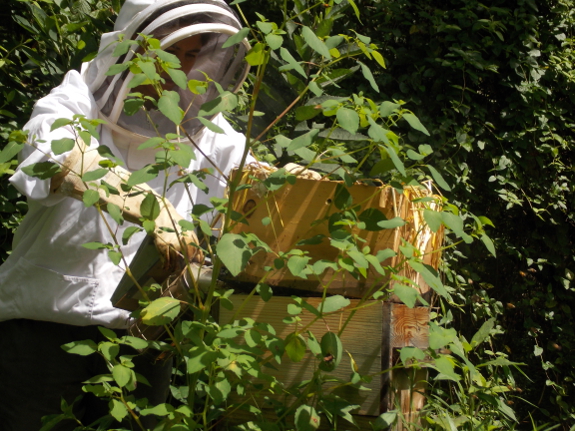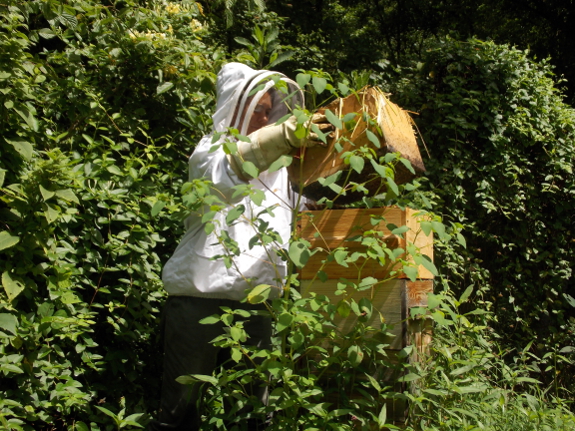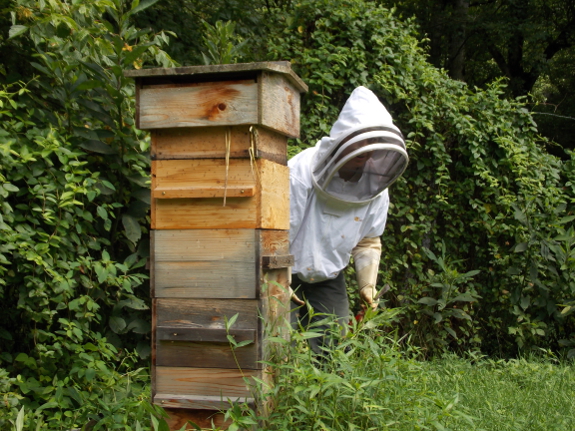
Supering vs. nadiring a Warre hive

I've come to understand
that a natural beekeeper's primary job is to make sure the bees have
just enough space to continue working without wearing themselves out
patrolling large expanses of empty hive. So, when the third box of
our mother hive went from looking like the top photo to looking like
the bottom photo in a mere seven days, I figured I'd better give them
some room to grow.

The question was ---
should I add the extra box to the top or to the bottom of the
hive? In general, Warre beekeepers nadir instead of super, meaning
that empty boxes are added to the bottom rather than to the top of a
hive. The theory is that keeping the lid on the hive and simply
hoisting the whole thing up to put a new box underneath causes less
disruption to the critical heat and scent within the brood
chamber. In the past, I have only nadired Warre hives, and last week I added the third box to our daughter hive at the bottom, as usual.

However, once a Warre
hive has more than two boxes mostly full of brood and honey, it becomes
much less feasible to nadir the hive without rigging a lift (or roping
two more people into helping you). In addition, this excellent page
suggests that supering is really the best way to add extra boxes onto a
booming Warre hive during a heavy summer nectar flow. In case you
don't want to read the long version, the gist is that bees only build
down as quickly as they need the space for brood, adding honey into
cells above the brood chamber as young bees vacate that space. So
during heavy nectar flows, nadiring simply doesn't give the bees enough
room to store the sweet liquid as quickly as it comes in.

With that data in mind, I
opted to super the mother hive (and then to clean up the weeds around
the hive entrance, a task that was long overdue). Before supering,
a quick peek down into the top box proved that the upper chamber was
full of capped honey, so hopefully that buffer will mean taking the top
off the hive had less impact on that all-important brood chamber.
And if this flow keeps up, we might get a box or two of honey this fall
despite slowing our mother hive down by splitting her in half this
spring!
Want more in-depth information? Browse through our books.
Or explore more posts by date or by subject.
About us: Anna Hess and Mark Hamilton spent over a decade living self-sufficiently in the mountains of Virginia before moving north to start over from scratch in the foothills of Ohio. They've experimented with permaculture, no-till gardening, trailersteading, home-based microbusinesses and much more, writing about their adventures in both blogs and books.
Want to be notified when new comments are posted on this page? Click on the RSS button after you add a comment to subscribe to the comment feed, or simply check the box beside "email replies to me" while writing your comment.
- Remove comment
